

| mathematical shenanigans 
(extended) phonetic alphabet | 
fitch style notation for katex | 
many-valued logic playground | 
miscellaneous | 
unicode
| |
a logic of rock–paper–scissors
october 6th, 2025in many-valued logics, it's common for truth values to belong to a lattice, ∧ and ∨ being respectively interpreted using meet and join operations. however, who says lattice, says partially ordered sets, and thus says transitivity. in a famously intransitive game like rock–paper–scissors, this obviously couldn't apply there. yet, it is well-known that in any lattice \((L,\le),\) the following properties are equivalent for all \(x,y\in L:\)
- \(x\le y,\)
- \(x\land y=x,\)
- \(x\lor y=y.\)
| \(A\land B\) | \(B\) | |||
| rock | paper | scissors | ||
| \(A\) | rock | rock | rock | scissors |
| paper | rock | paper | paper | |
| scissors | scissors | paper | scissors | |
| \(A\lor B\) | \(B\) | |||
| rock | paper | scissors | ||
| \(A\) | rock | rock | paper | rock |
| paper | paper | paper | scissors | |
| scissors | rock | scissors | scissors | |
despite being starkly different operations to meets and joins, these operations can still be described algebraically in similar fashion. a very important property of rock–paper–scissors is that, though it's intransitive, it is antisymmetric, and total, which is all we need to assert that, between any two different positions, one wins over the other other ; this is because of the following theorem : $$\begin{array}{cll} &\{\forall x\quad\forall y\quad(R[x,y]\supset R[y,x]\supset x=y)\}&\text{antisymmetry}\\ \cup&\{\forall x\quad\forall y\quad(R[x,y]\lor R[y,x])\}&\text{totality}\\ \vDash&\forall x\quad\forall y\quad({\sim}x=y\supset{\sim}(R[x,y]\equiv R[y,x])) \end{array}$$ combined with reflexivity, these three properties help us substitute transitivity locally : for \(\mathcal R:L\times L\to\{\textsf{true},\textsf{false}\}\) a reflexive, antisymmetric, total relation over \(L,\) then for all \(x,y\in L,\) we have that \((\{x,y\},\mathcal R|_{\{x,y\}\times\{x,y\}})\) is a lattice, in which we can therefore locally evaluate \(x\land y\) and \(x\lor y,\) and use these values for our conjunction and disjunction matrices respectively.
interestingly, these \((\{x,y\},\mathcal R|_{\{x,y\}\times\{x,y\}})\) are also heyting/boolean algebras. though, we can't properly generalise ⇒ this way, due to how this approach forces idempotence. indeed, \((\{0,1\},\le)\) is a totally ordered heyting algebra, so one could find \((0\Rightarrow0)=1\) in the usual heyting algebra version, even though we would've had \((0\Rightarrow0)=0\) if we were to evaluate \(0\Rightarrow0\) on \((\{0\},{\le}|_{\{\left<0,0\right>\}})\) instead.
critically, negation would also function quite queerly if we were to follow that train of thought, as from its unary nature, we would have to valuate \(\neg x\) by looking at \((\{x\},{\le}|_{\{\left< x,x\right>\}})\) could only yield \(\neg x=x,\) so each truth value would be its own negation. having a truth value being its own negation isn't unheard of, we have glutty and gappy examples in systems such as fde (dunn, 1976 ; belnap, 1977), lp (priest, 1979), or its gappy ancestor from kleene, 1938. however, i must admit, i'd never really seen a logic that only had truth values which were their own negations – and i can very well imagine why.
the truth matrices for these are :
| \(A\supset B\) | \(B\) | |||
| rock | paper | scissors | ||
| \(A\) | rock | rock | paper | scissors |
| paper | rock | paper | scissors | |
| scissors | rock | paper | scissors | |
| \(A\) | \({\sim}A\) |
| rock | rock |
| paper | paper |
| scissors | scissors |
by using exactly one of paper, rock, or scissors as designated value, we have some more interesting properties : its disjunction functions more so as exclusive disjunction than as inclusive disjunction, while validating constructive dilemma and invalidating lem, and its conditional operation becomes associative, validates boethius's theses in rule form along with their reciprocal inferences, allows negation of the antecedent while invalidating modus tollens (yet validating modus ponens), invalidates most paradoxes of material implication, validates exportation–importation (ie. currying–decurrying), etc. naturally, this made me wonder : how many of these properties are due to working with a logic where all truth values are self-negative ?
thus, i looked at another logic that has this property, which is essentially what you get when you take the usual 2-valued boolean standard matrices, except for negation, where each value is its own negation. it includes one designated value, which we can call "both" instead, and an undesignated one, which we can call "neither", as such glutty and gappy values are named in systems such as fde. i noticed a few common points, notably validating boethius's theses in rule form and their reciprocal rules, negating the antecedent but not affirming the consequent, invalidating modus tollens while validating modus ponens, they both validate constructive dilemma, etc. still, there are quite a few discrepancies : the "both"/"neither" logic also validates aristotle's theses, boethius's theses in all forms and their reciprocals, while the rock–paper–scissors one validates \(B\) from \(A\supset B\) alone, invalidates reflexivity (resp. irreflexivity) of ⊃, has an exclusive disjunction rather than an inclusive one, invalidates associativity of ∨ and ∧, while validating the associativity of ⊂, invalidates simplification/&-elim., invalidates absorption, etc. so overall, the rock–paper–scissors one is usually stricter than the both–neither logic, but for a few rules such as infering \(B\) from \(A\supset B,\) etc.
welp, i don't especially have a huge conclusion to do on this blog article, i kinda presented the various oddities i've had the pleasure to find when exploring this weird idea. i'm still sharing this tho, could give a few people some ideas, which i'd be glad to see be developped further.
"appendices" :
|
|